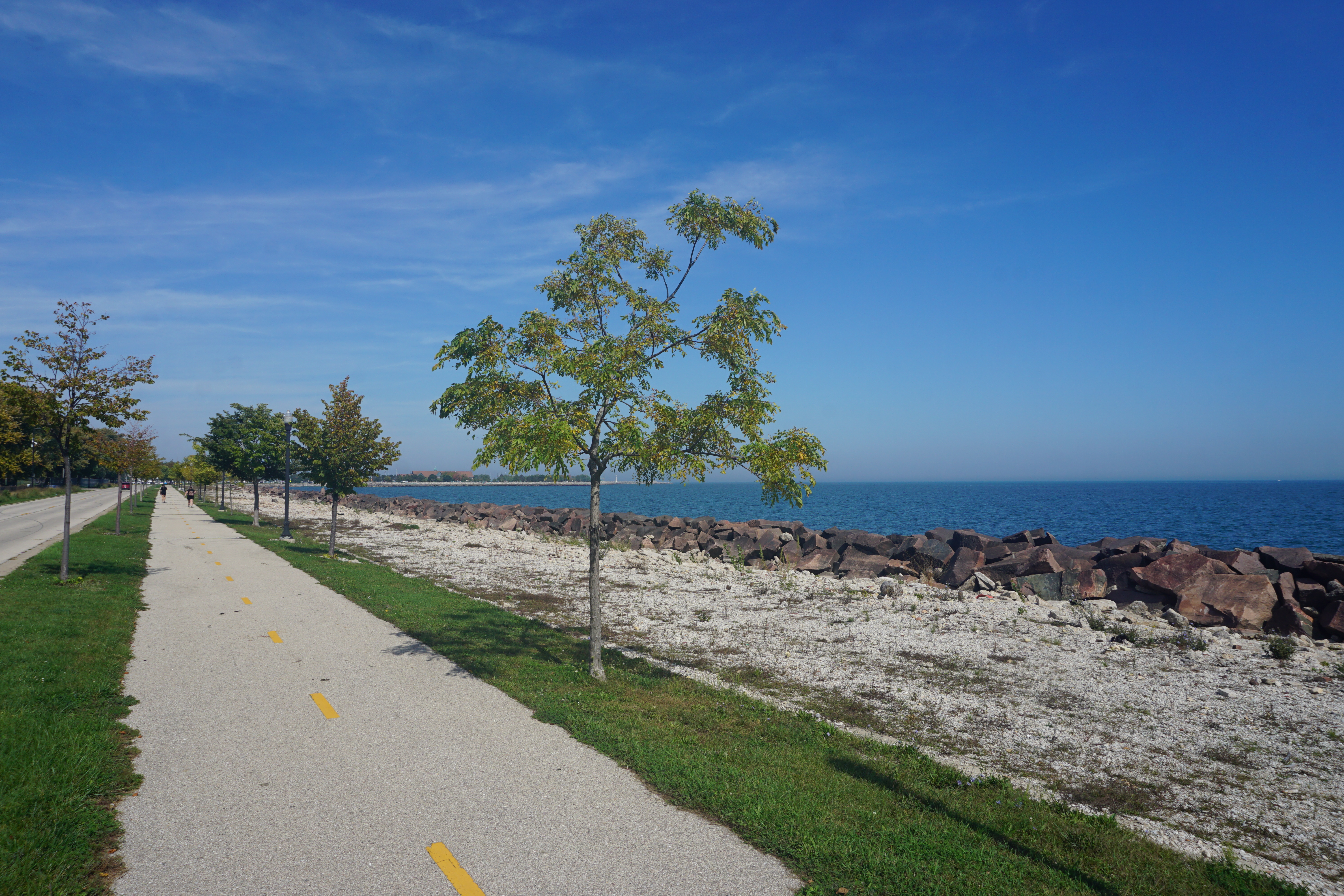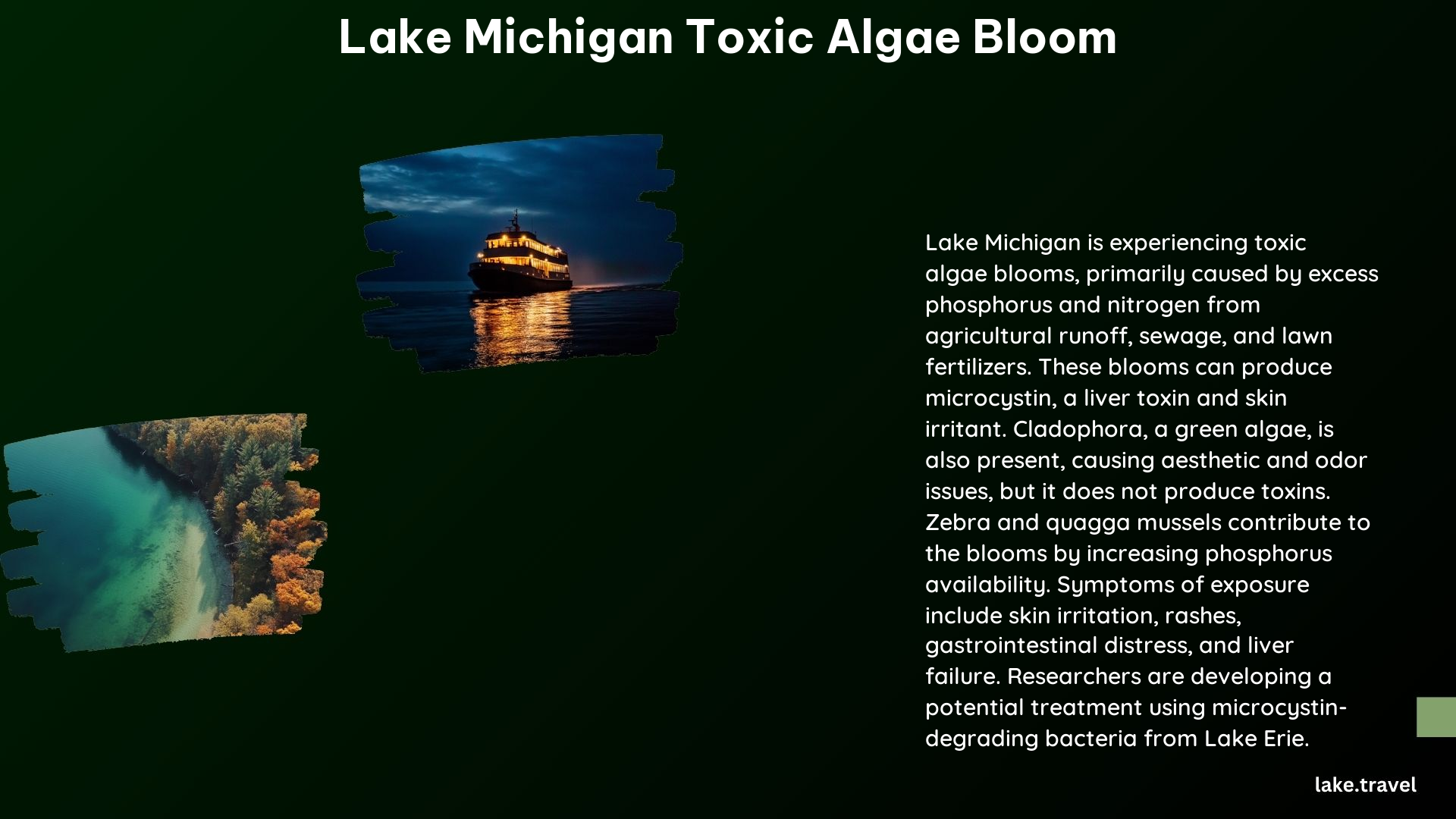Lake Michigan, one of the Great Lakes, faces a significant environmental issue: toxic algae blooms. These blooms are caused by cyanobacteria, which can produce toxins harmful to humans and animals. In this blog post, we will explore the details of toxic algae blooms in Lake Michigan, their health risks, and how to identify and avoid them.
What are Harmful Algal Blooms (HABs)?

Harmful algal blooms (HABs) are rapid growths of cyanobacteria that can produce toxins. These blooms can occur in any body of water but are more common in shallow, warm, and nutrient-rich environments like Lake Michigan. The most dominant cyanobacteria in the Great Lakes is Microcystis, which produces microcystin, a liver toxin and skin irritant.
Causes of HABs in Lake Michigan

HABs in Lake Michigan are primarily caused by excess phosphorus and nitrogen in the water, which can come from various sources such as:
- Agricultural runoff
- Malfunctioning septic systems
- Household and industrial detergents
- Lawn fertilizers
- Urban runoff
Additionally, the invasion of zebra and quagga mussels in the Great Lakes has been linked to the increase in HABs. These mussels eat good algae and release blue-green algae back into the water intact.
Health Risks Associated with Toxic Algae Blooms
Toxic algae blooms in Lake Michigan can pose significant health risks to humans and animals. Exposure to these toxins can cause a range of symptoms, including:
- Skin irritation and rashes
- Respiratory problems
- Gastrointestinal issues
- Liver damage
- Neurological problems
In severe cases, exposure to these toxins can be fatal, especially for pets and livestock.
Identifying and Avoiding Toxic Algae Blooms in Lake Michigan
To minimize the risk of exposure to toxic algae blooms in Lake Michigan, follow these guidelines:
- Visual Identification: Look for visible scums of algae in the water, which can appear as green, blue-green, blue, brown, yellow, white, purple, or red. The water may also have a bad odor or appear like spilled paint.
- Avoid Contact: If you suspect a toxic algae bloom, avoid contact with the water. Do not swim, boat, or engage in any water activities in areas with visible blooms.
- Rinse Off: After swimming or coming into contact with the water, rinse yourself and your pets thoroughly to remove any potential toxins.
- Pay Attention to Warnings: Pay attention to warning signs posted at beaches or water bodies. If there are advisories or closings due to HABs, heed the warnings.
- Monitor Water Quality: Participate in local water quality monitoring programs to help track and report HABs.
Prevention and Treatment Efforts for Lake Michigan Toxic Algae Blooms
Several efforts are underway to prevent and treat toxic algae blooms in Lake Michigan:
- Reducing Phosphorus Pollution: Efforts to reduce phosphorus pollution from agricultural runoff, septic systems, and other sources are crucial in preventing HABs.
- Research and Development: Scientists are working on developing treatments for toxic algae exposure, such as probiotics that can detoxify microcystin.
- Monitoring and Reporting: Reporting suspicious-looking algae to local authorities and participating in monitoring programs can help identify and track HABs.
By understanding the causes, health risks, and prevention strategies for toxic algae blooms in Lake Michigan, we can work together to protect the health and beauty of this important Great Lake.
References
- Bridgemi. (2024). Toxic Great Lakes algae makes Michigan sick. But remedy may be near. Retrieved from https://www.bridgemi.com/michigan-environment-watch/toxic-great-lakes-algae-makes-michigan-sick-remedy-may-be-near
- Wisconsin DNR. (n.d.). Nuisance Algae (Cladophora) in Lake Michigan. Retrieved from https://dnr.wisconsin.gov/topic/GreatLakes/Cladophora.html
- Michigan.gov. (n.d.). FAQ: Harmful Algal Blooms. Retrieved from https://www.michigan.gov/egle/faqs/water-quality-protection/harmful-algal-blooms
- Michigan Sea Grant. (n.d.). Harmful Algal Blooms. Retrieved from https://www.michiganseagrant.org/topics/coastal-hazards-and-safety/harmful-algal-blooms/.
